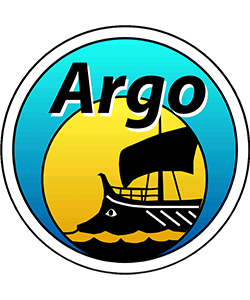Data transmission systems
As the float ascends, a series of pressure, temperature, salinity and other measurements are made and stored on board the float. These are transmitted to satellites when the float reaches the surface. For floats using high speed communications with more bandwidth capabilities, measurements are taken frequently, often up to every 2db, resulting in several hundred measurements per profile. For floats using Argos, a series of 200 measurements of pressure, temperature, and salinity are taken.

For a shrinking percentage of floats in the Argo array (less than 25%), the data are transmitted from the ocean surface via the Système Argos location and data transmission system. The data transmission rates are such that to guarantee error free data reception and location in all weather conditions the float must spend between 6 and 12 hrs at the surface. Positions are accurate to ~100m depending on the number of satellites within range and the geometry of their distribution.
The majority of floats in the Argo array now use the Global Positioning System (GPS) to establish float positions and use Iridium to transmit their data. When newer float models began developing in 2010, Iridium was chosen as the new telecommunications service because it allows more detailed profiles to be transmitted in a shorter time period at the surface and it allows two-way communication with the float to change the float’s mission if desired. Since 2013, the majority of floats being deployed used Iridium communications and will slowly replace the Argos floats as they reach the end of their life.
